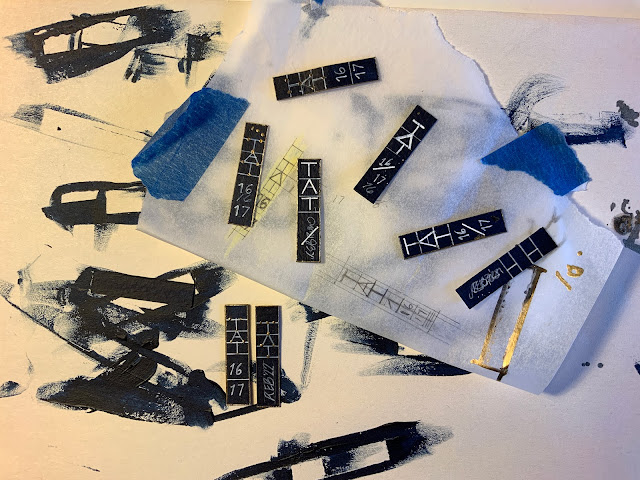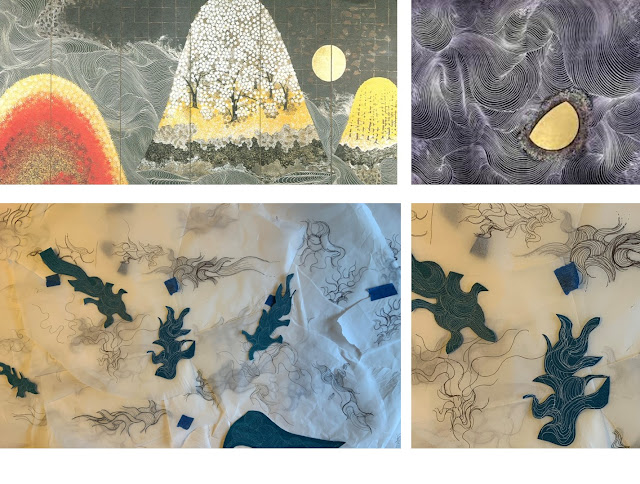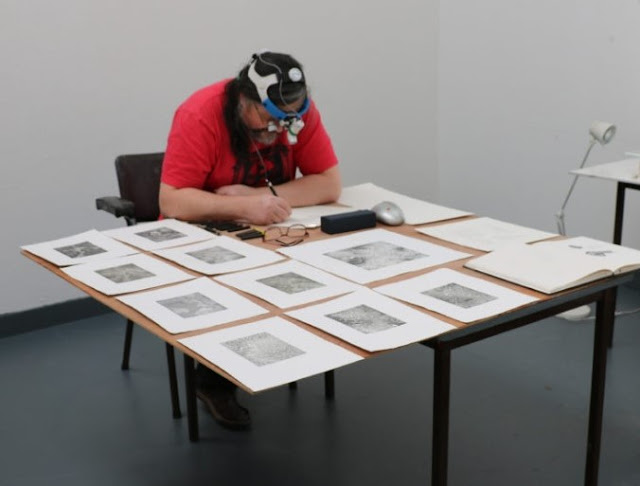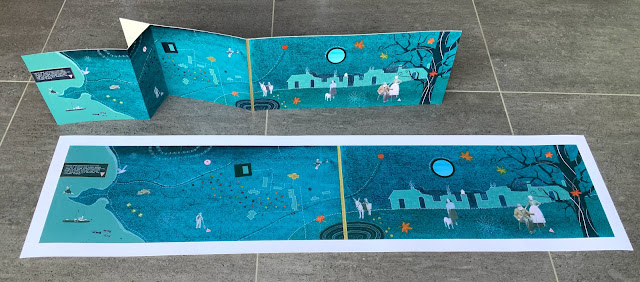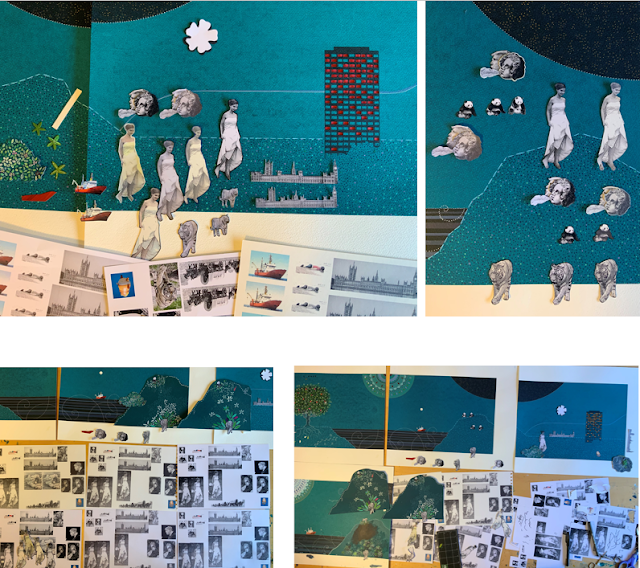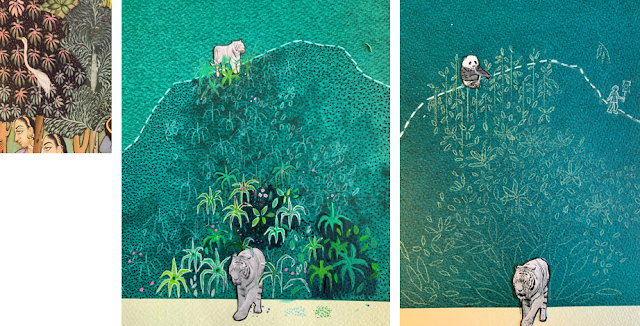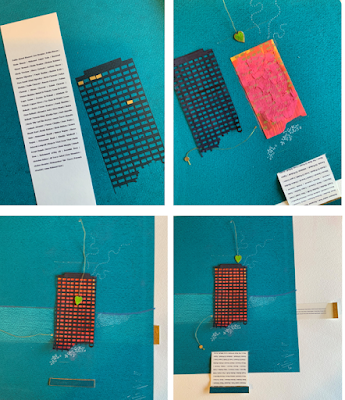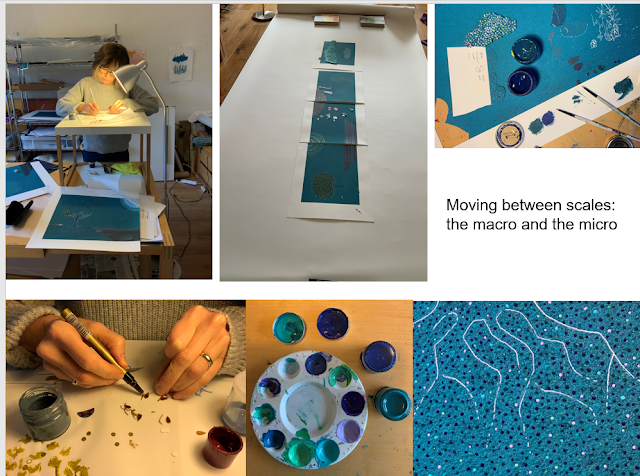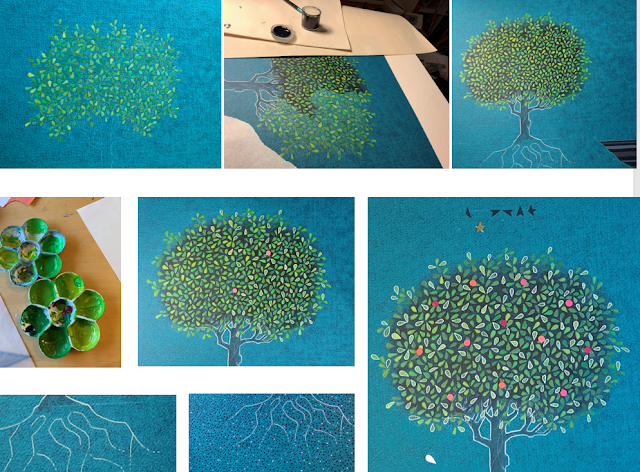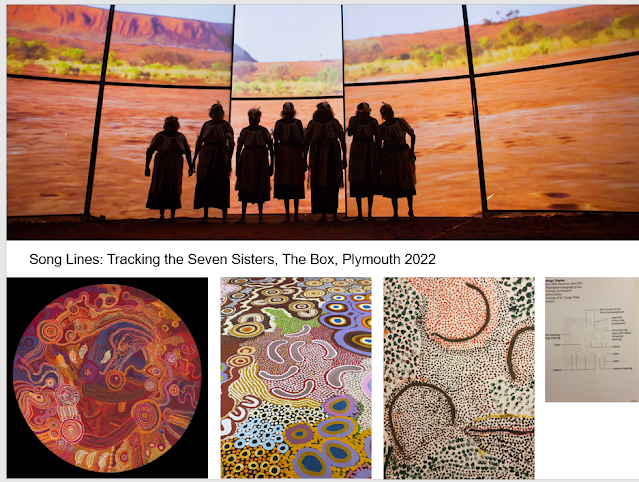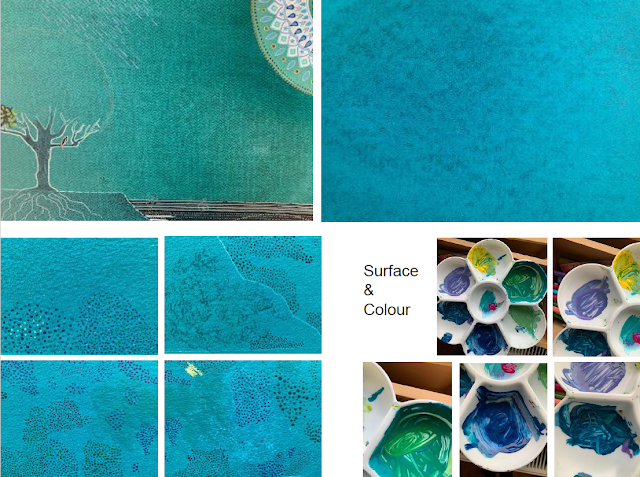I have reached the final, 4th plate of the 2016-2017 panel and experimenting with ways to depict the Whanganui river in New Zealand, that now has the same legal rights as a person: drawing, collage, painting, printing and looking for inspiration from the way water is represented in Japanese art. I am finding this element of the panel very tricky indeed as I don't want the approach to look too mannered and I also don't want to repeat methods I have already used. I will keep testing ideas. Slow as always, but perhaps this is one of the points of the work: marking time. Fig. 1. Ogata Kōrin, Red and White Plum Blossoms , Edo period, 18th century Fig. 2. Tour of Waterfalls in Various Province, Hokusai Fig 3. Masculine Waves , ceiling panel Hokusai Fig. 4 & 5. Landscape with the Sun and Moon , jûyô-bunkazai , unknown artist, mid-16th century, Kongôji (Ôsaka Prefecture) Fig 6 & 7 Star Festival, Kayama Matazo: The incredible detail in this modern painting / collage is
